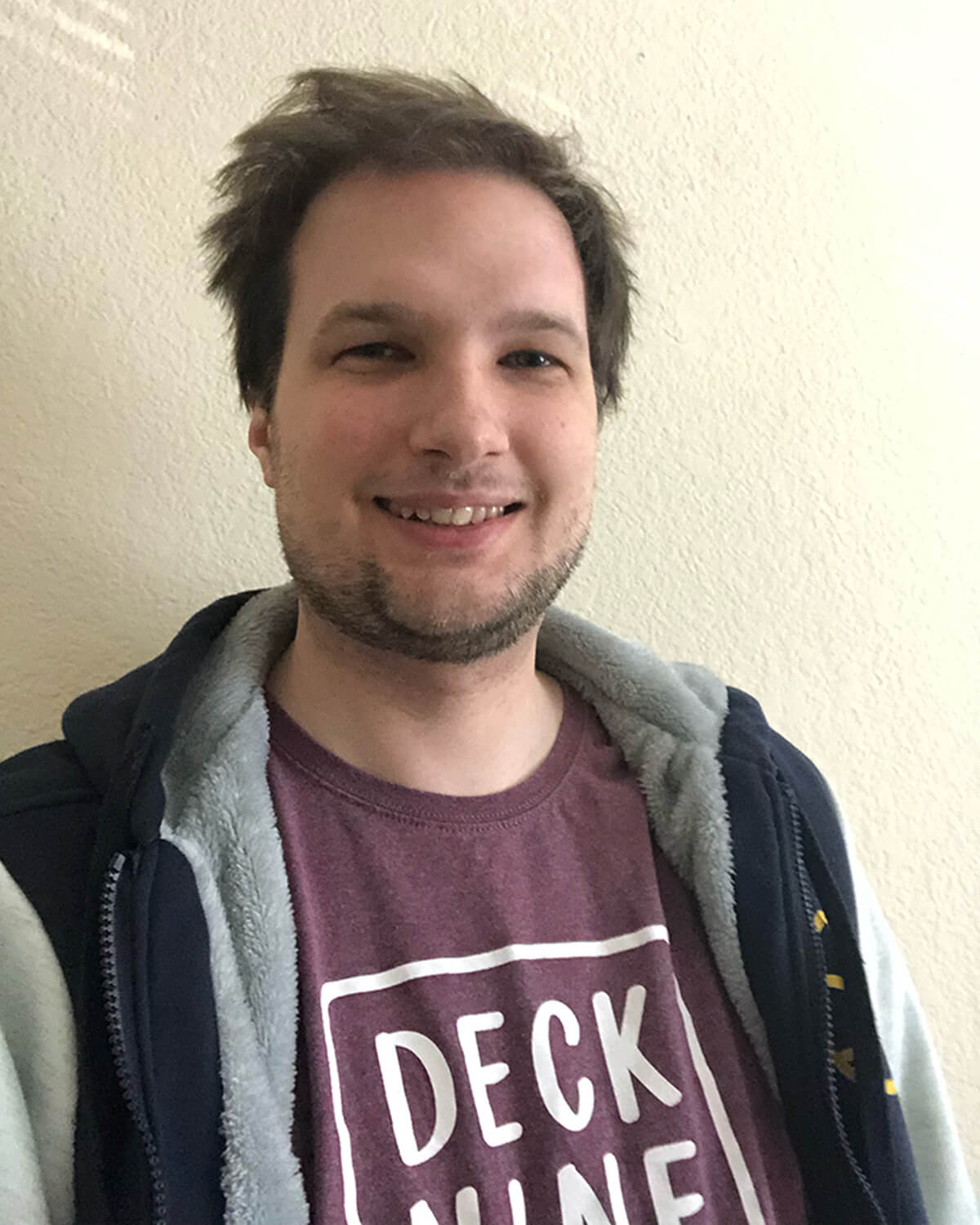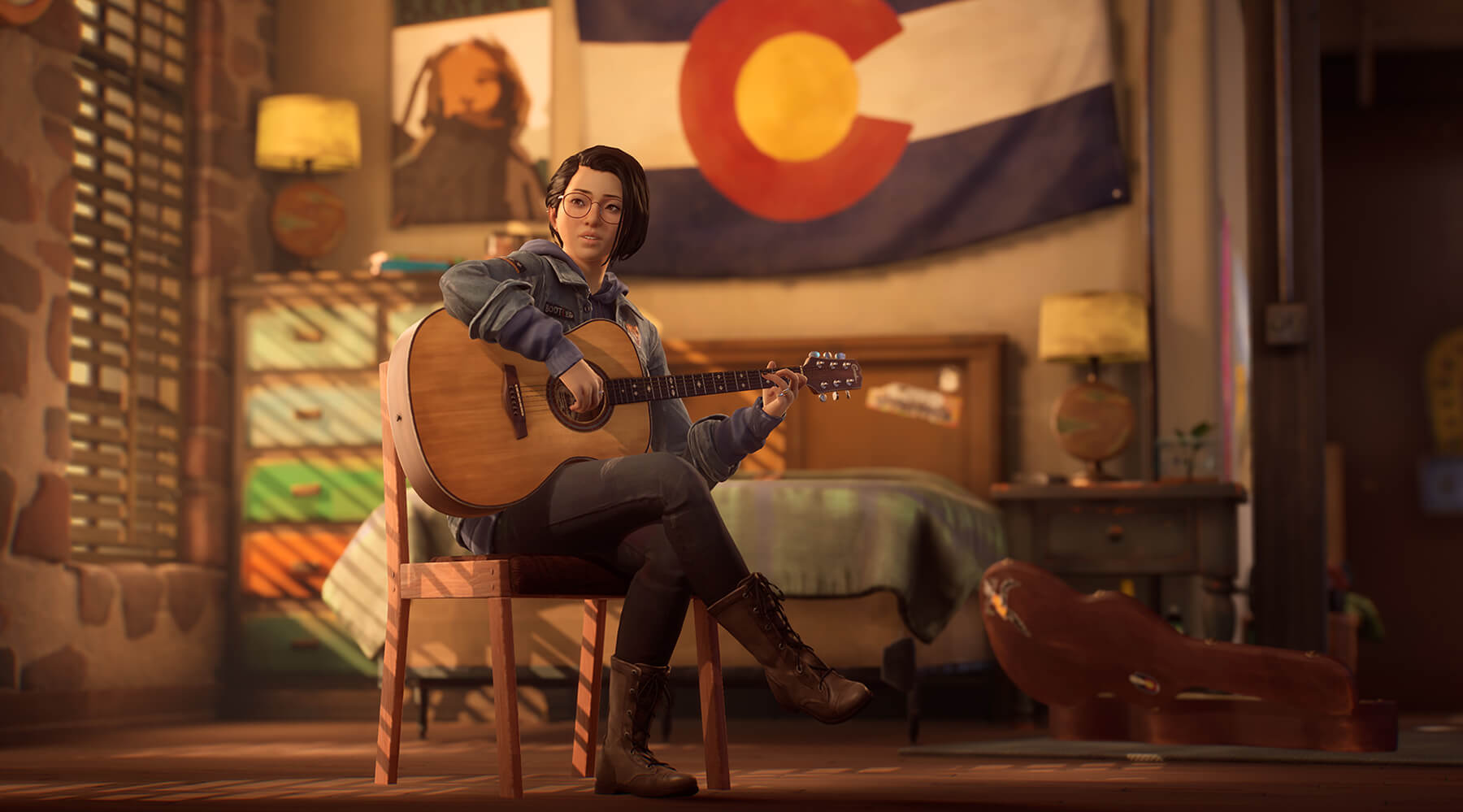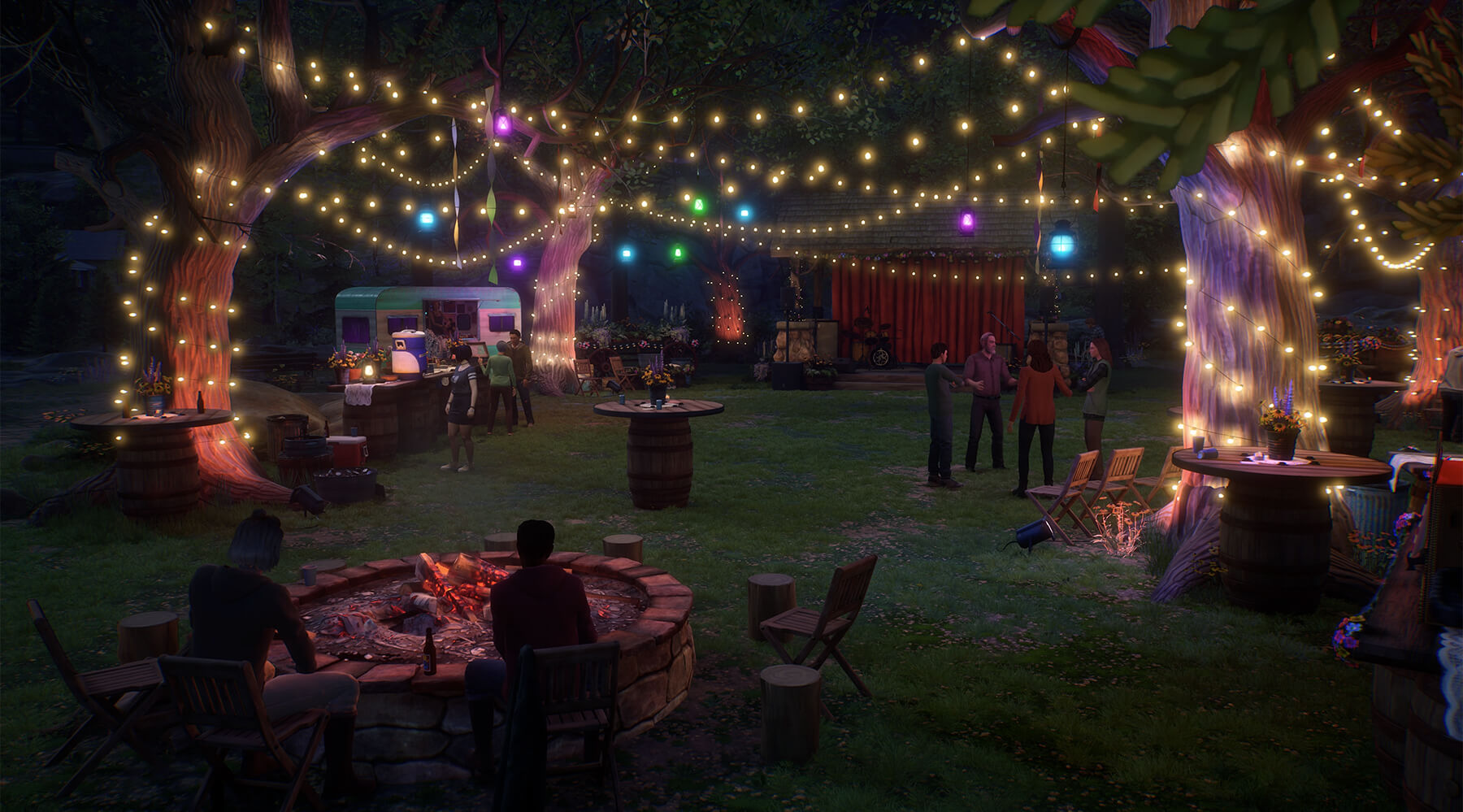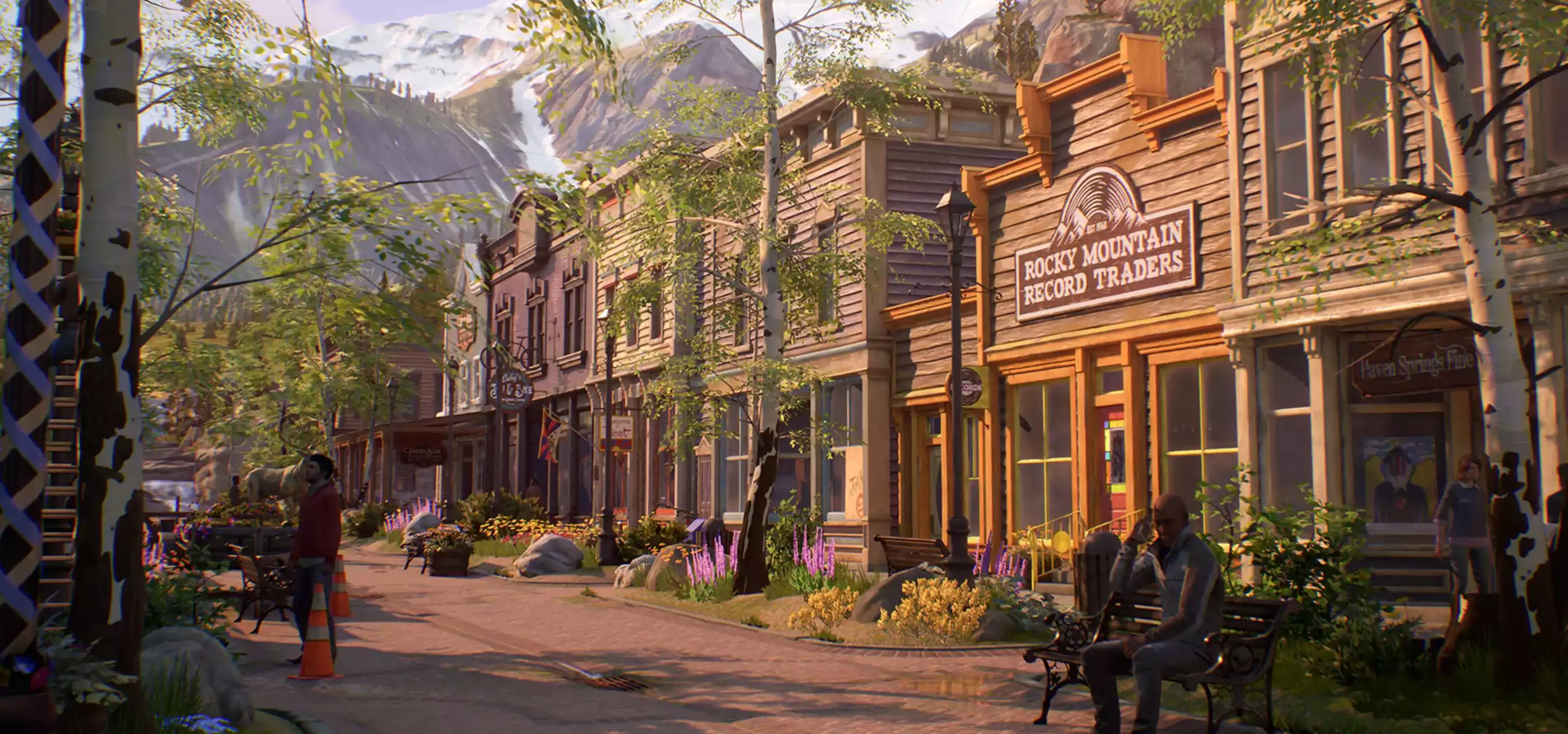At the dawn of the new millennium, one of the most technically advanced games for the Nintendo 64 made its debut – Rare’s first-person shooter, Perfect Dark. For a young Justin Maio, it was the game’s multiplayer bots, aka “simulants,” that were most impressive. “You could give simulants their own personality,” Maio remembers fondly. “They had the TurtleSim that would hoard all the shields and the PeaceSim that grabbed all the weapons so nobody could use them. I thought those goofy little personalities were so interesting. They’re what got me into AI.” Today, the BS in Computer Science in Real-Time Interactive Simulation alumnus has made a career out of crafting “goofy little personalities” as an AI programmer at Deck Nine – but unlike Perfect Dark’s simulants, Maio’s personalities won’t try to shoot you. They mostly just hang out and live their lives in the picturesque mining town of Haven Springs, Colorado, the setting for Deck Nine’s new entry in the Life Is Strange series, Life Is Strange: True Colors.

Before Maio brought his talents to Deck Nine, however, he did indeed polish his AI skills by creating combatants at DigiPen. “I became known for being the AI guy in class,” Maio laughs. “I would buy all the books. I remember [DigiPen lecturer] Ben Ellinger mentioned one to me called Behavioral Mathematics that I immediately picked up and read through. It was fascinating!” Maio’s sophomore game team project, the top-down multiplayer shooter Nexus, found him flexing his newfound know-how by creating the game’s enemy bots. Going the extra mile, he also programmed his bots to translate level data into a pathfinding grid, allowing them to dynamically navigate whatever his team’s designers built in the level editor. After leaving DigiPen, Maio took his AI abilities to Monolith Productions, helping bring the battle-torn world of Middle-earth: Shadow of War to life – skills he later employed working on the blocky universe of Minecraft at Microsoft.

Once he landed at Deck Nine and began work on Life Is Strange: True Colors, he found his AI work going in a considerably different direction – one without fighting. “After doing combat AI for so long, you just start to know the drill: Enemies discover you, maybe they go stealth or squad up, and then they engage,” Maio says. “It always has it’s own unique challenges and complexity, but shifting focus to something less combat focused makes you approach things differently.” The latest in a series known for its emotional, narrative-driven gameplay, Life Is Strange: True Colors stars Alex Chen, a young woman with empathic superpowers that allow her to see, and sometimes manipulate, people’s emotions. Maio found himself on the game’s “Living World” team, tasked with designing, programming, and populating its Colorado setting with unique, believable non-player characters (NPCs). “I basically created the AI of the world,” Maio says. “We were in charge of all the ambient life, behavior, and conversation happening in the town of Haven Springs.”
To start, Deck Nine’s narrative, design, and animation team would sit down with Maio and have a conversation about a specific scene. “We’d look at what people would be doing in, say, the bar on the main street of Haven Springs, and pitch ideas,” Maio says. Luckily, since Deck Nine is based in Westminster, Colorado, the team didn’t need to go far for inspiration. “We’d be looking at local Colorado bars and seeing what people would be doing there and what the seating arrangements looked like,” Maio says. “Then we’d decide to have so-and-so NPCs having a round robin conversation in this corner, people over here drinking and eating, then maybe there’s a photographer taking pictures, and an alcoholic by the bar counter.” Next, the team would figure out what consistent behaviors those people might carry out through the scenes and nail down their physical placement in the area. “NPC distribution is an important element you might not think about,” Maio says. “There could be a really important cutscene, but if there’s a very flamboyant NPC in the background waving his arms around or something super distracting, it definitely takes away from the cutscene!”

Once the living world design was hammered out, Maio set to programming the AI that powered it. Beyond programming their overt behaviors, Maio also paid close attention to lots of smaller details that add up to more realism. “There’s a lot of subtle things in games you don’t realize are AI,” Maio says. “Having NPCs’ eyes and heads follow the player’s movement, or making them react when you bump into them. Having their side conversations and ambient animations dynamically change as you get closer to them. Making them go and do things in reaction to side missions you’re on. Those little things are a big part of making the world feel more believable and less like a bunch of NPCs just standing around.”
Maio says the foundational, low-level programming skills he learned at DigiPen, especially assembly code and debugging, have been invaluable in the work he does today. “It’s infinitely useful,” Maio says. “It’s much easier for me to jump into lots of systems because of that, and I’d highly recommend programmers at DigiPen take the debugging and code optimization class.” Even though Life Is Strange: True Colors just shipped, he’s already putting his DigiPen skills to use taking things to the next level. “I now own more of the living world systems and have more control over the direction of the AI than when I started on True Colors,” Maio says. “I’ve actually been in the process of improving what we did with the living world for our future projects.” While he’s incredibly proud of his work bringing Haven Springs to life, he’s setting his bar even higher for future Deck Nine projects. “I want to get the AI to the degree I appreciate in Perfect Dark!”
